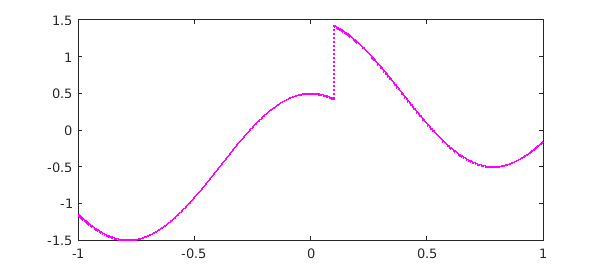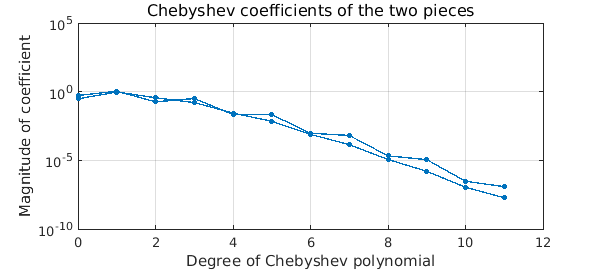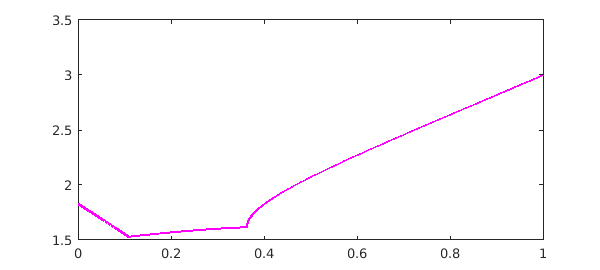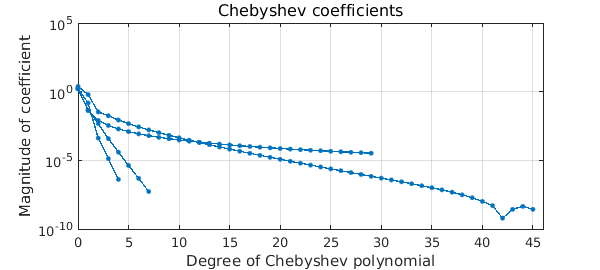Chebfun user Tyler Jones has raised the question of how one can construct a chebfun for a noisy function with discontinuities, so that breakpoints are needed. Here we illustrate how this can be done.
1. An elementary noisy function with a jump
First let's take a function we know explicitly:
$$ f(x) = \hbox{sign}(x-0.1)/2+\cos(4x)+\hbox{white noise of scale } 10^{-8}. $$
Here is an anonymous function that samples $f$:
rng('default'); rng(0)
ff = @(x) sign(x-0.1)/2 + cos(4*x) + 1e-8*randn(size(x));
We can make a chebfun like this, with "splitting on":
f = chebfun(ff, 'splitting', 'on', 'eps',1e-8); LW = 'LineWidth'; MS = 'MarkerSize'; FS = 'FontSize'; plot(f, 'm', LW, 1.6)

The command plotcoeffs shows that each piece has been resolved to about 8 digits:
plotcoeffs(f, '.-', LW, 1, MS, 14)
title('Chebyshev coefficients of the two pieces',FS,12)

The command f.ends shows the breakpoint that has been introduced:
f.ends
ans = -1.000000000000000 0.100000000000000 1.000000000000000
2. A noisy function obtained from linear algebra
Now let's cook up a function that we don't know explicitly, the spectral radius of a linear combination of two matrices $A$ and $B$. Here are the matrices
A = [1 2 0; 0 2 1; 1 0 2] B = [1 1 0; 1 -1 1; -1 1 1]
A =
1 2 0
0 2 1
1 0 2
B =
1 1 0
1 -1 1
-1 1 1
Here is the function that computes the spectral radius, with noise:
gg = @(t) max(abs(eig(t*A + (1-t)*B))) + 1e-8*randn;
We can make a chebfun again with "splitting on":
g = chebfun(gg, [0 1], 'splitting', 'on', 'eps', 1e-8, 'vectorize'); plot(g, 'm', LW, 1.6)

The figure leads us to expect two breakpoints, but in fact there are more:
g.ends'
ans =
0
0.108127162489656
0.362698596232864
0.372656430654245
1.000000000000000
plotcoeffs confirms that there are more than three pieces:
plotcoeffs(g, '.-', LW, 1, MS, 10)
title('Chebyshev coefficients',FS,12)

The explanation is that this function happens to have a square root singularity, and Chebfun has introduced additional breakpoints to resolve it.

